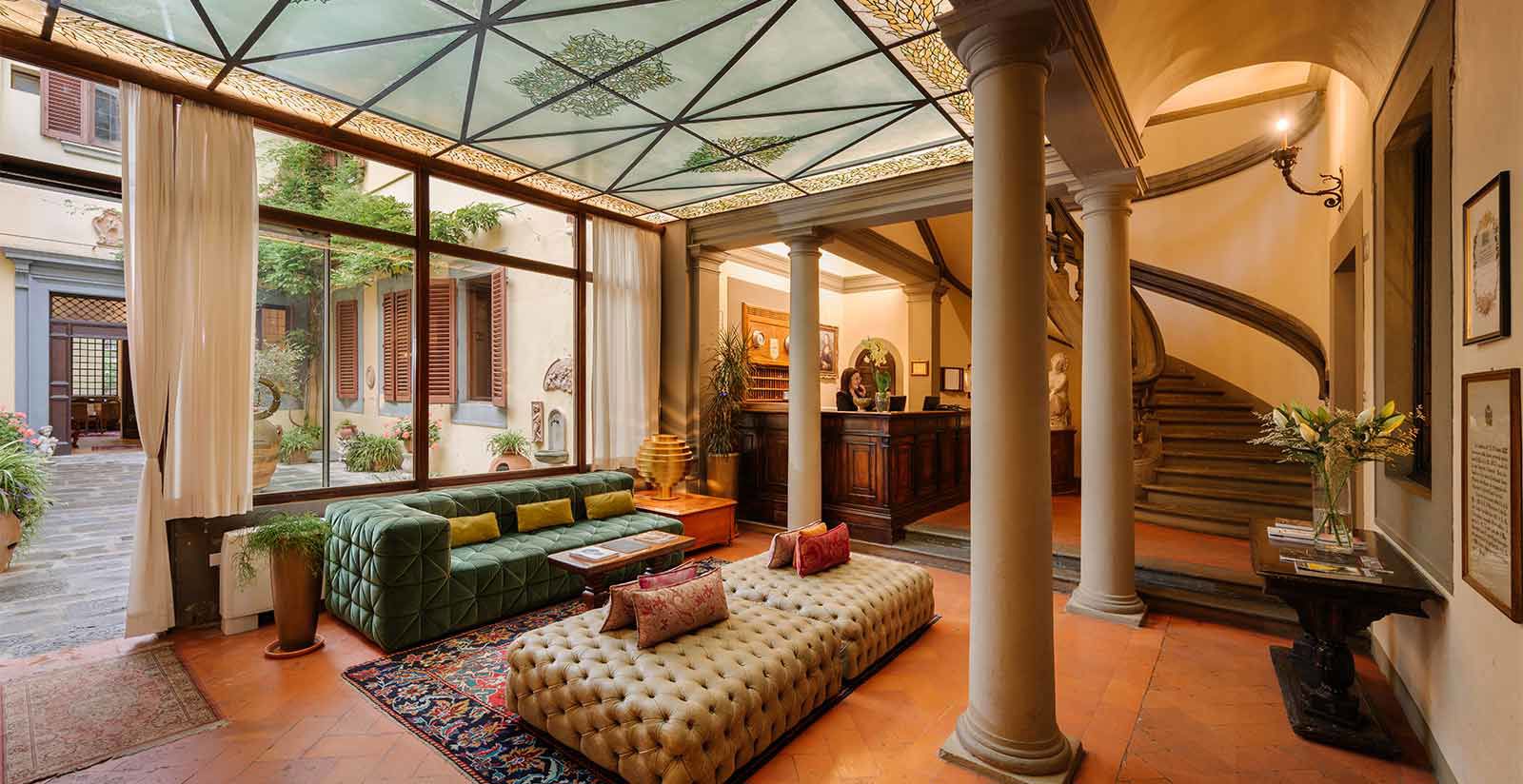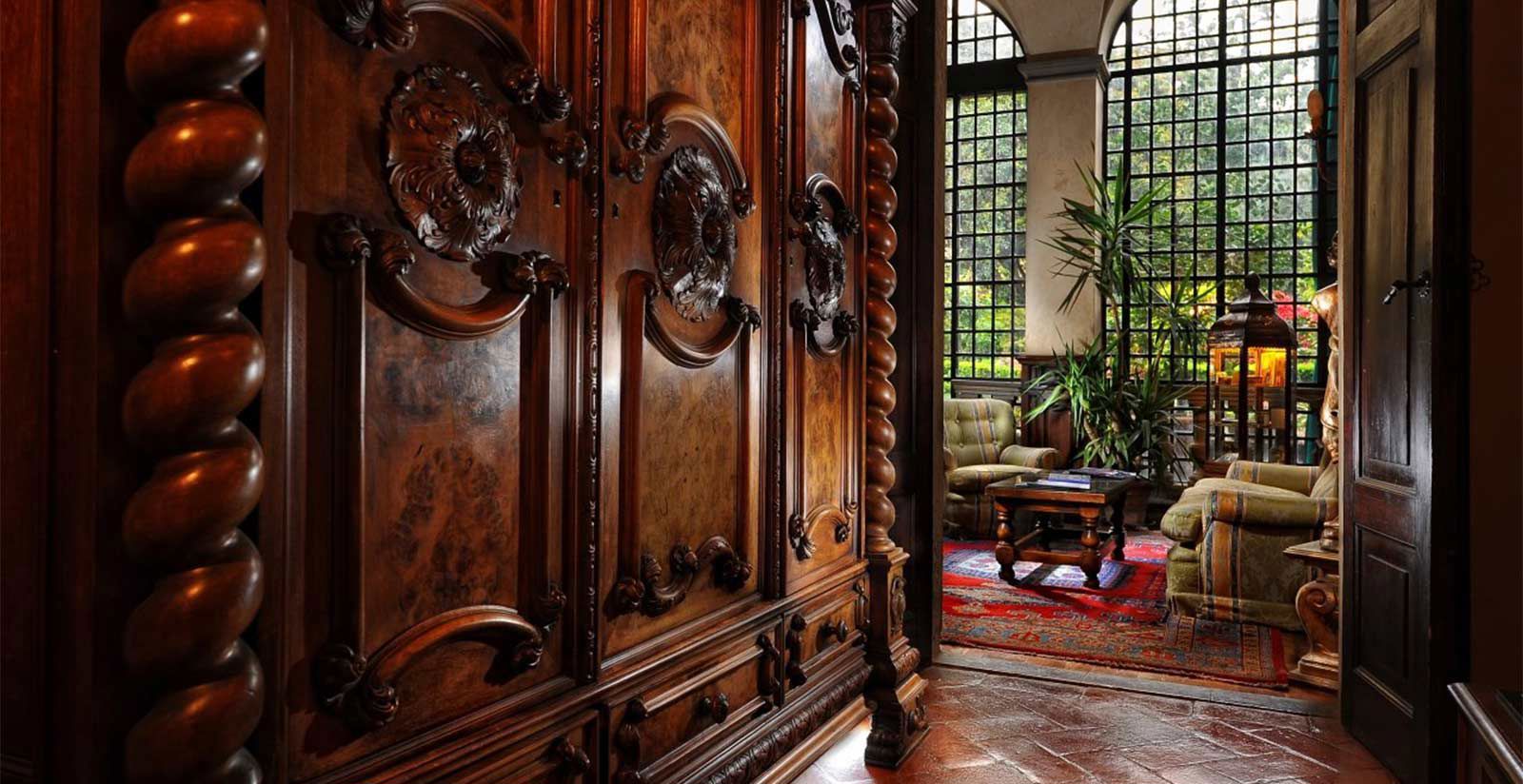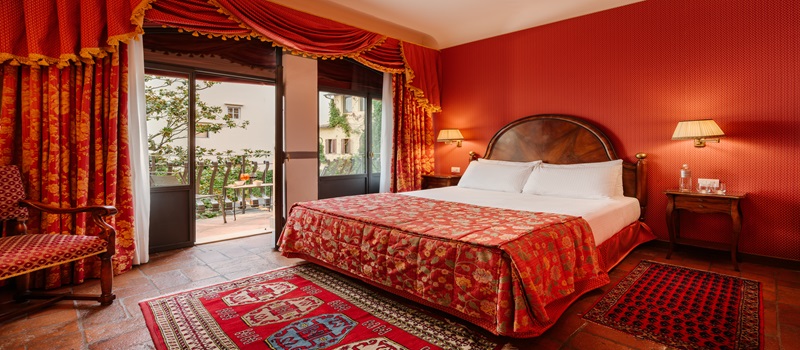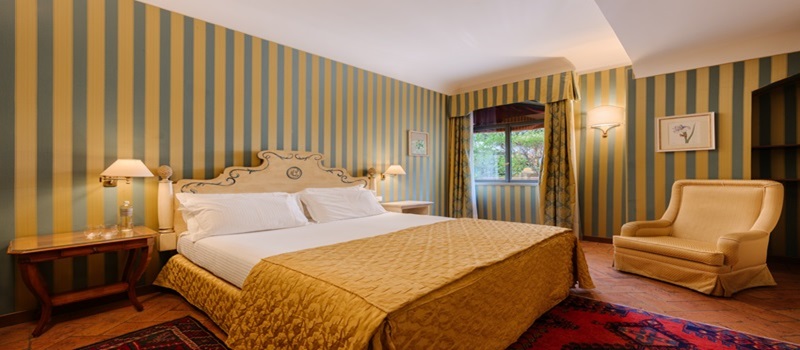The Palace
The Palazzo Antico del Monna Lisa was built in the 14th century as a merchant court house with workshops and warehouses used for the flourishing Florentine trade.
The very street where the Palazzo stands, Borgo Pinti, has its own history. In fact, all those alleys outside the city walls of 'Florentia' were called 'Borgo'. It was only in the early Middle Ages that it was incorporated into the city circle, while still retaining the name Borgo Pinti. Not a few artists have lived or worked in Borgo Pinti. The most famous of all is certainly the sculptor Jean de Boulogne, known as Gianbologna, who in 1608 bought the Palazzo Bellini delle Stelle, located opposite the Hotel Monna Lisa and still open to visitors, and made it his home and workshop.
From the 15th century onwards, the Old Palace of the Monna Lisa was transformed into a residential palace for noble and aristocratic Florentine families, such as the Ferrantini Family in the early 15th century, who did the honours for the Patriarch of Constantinople in 1439 during the Ecumenical Council, or the Neri Family in the 16th century, who gave birth to S. Filippo Neri, known as Pippo il Buono in 1515.
The building took its current name of Palazzo Marzichi-Lenzi around 1600 from the name of the Florentine family of the same name that purchased the building. An important family of merchants during the period of the Florentine Republic, to which they gave numerous Priors and Gonfaloniers of Justice, the Marzichi-Lenzi family were awarded the noble title of 'Conti' by Grand Duke Cosimo III, (1642-1723), in the second half of the 17th century. Above the imposing main door of the Palazzo, in the centre of the façade, one can see the coat of arms of the Marzichi-Lenzi family depicting a taurine head, in heraldic jargon 'azure with a golden bull'.
The palace appears on the 1901 list, compiled by the General Directorate of Antiquities and Fine Arts, as a historic monumental building to be considered National Artistic Heritage.





